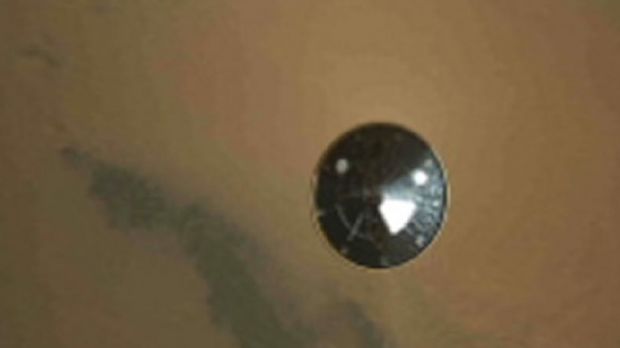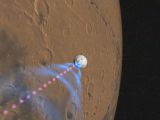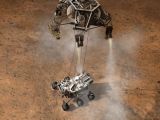We've been doing our best to cover the progress of the MSL Curiosity space rover ever since NASA began to work on it a couple of years ago, so it's about time we gave a full overview of the machine.
MLS (Mars Science Laboratory) Curiosity is the most sophisticated machine that mankind has sent to the red planet so far.
The jet-propulsed machine touched down yesterday and NASA even provided a stop-motion video of the last two minutes of descent.
For the next two years, NASA will have it investigate the central mountain in the Gale Crater, which is more than 5km high. The rover will search for evidence that the Mars environment might have sustained microbial life at some point in the past.
So now we may as well see just how this creature will be sending scientific data gathered by the on-board science lab.
Hardware
The single-board computer acting as the heart of the 900 kg (2,000 lb) rover is a RAD750 system produced by BAE.
The CPU, PowerPC 750 Apple-made made by IBM (but more widely known as PowerPC G3 thanks to its use in Apple Mac system), is of 200 MHz, hundreds of times faster than the microprocessors used in previous unmanned space missions.
The chip is backed by 256 MB of RAM and 2 GB of flash storage, which holds the video and other data before transmissions to Earth are carried out.
RAD750 is one of the most popular on-board platforms for spacecraft, which is ironic because it doesn't even come close to the computing prowess of Sci Fi computers. It does have a good temperature resistance though (-55 to 70 degrees Celsius) and can survive radiation levels of up to 1,000 gray.
Knowing how thin Mars' atmosphere is, and the consequent abundance of solar radiation, this likely played a great part in NASA's choice. NASA even included a second RAD750, for redundancy, even though the exterior of Curiosity should protect against temperatures and radiation well enough.
As for power generation, the explorer has a 2000-watt plutonium-based radioisotope thermoelectric generator, which outputs 125 Watts.
Instruments
No fewer than 17 cameras are used. All have CCD sensors and 1,600 x 1,200 resolution (2 megapixels).
For scientific purposes, the ChamCam is the most important, as it can vaporize rocks and soil with an infrared laser, so that it may subsequently analyze the sample using spectroscopy.
MastCam is at least as important. Its role is to capture 720p video at 10 fps in true color. MastCam hasn't been raised yet though. That will only happen in two days, after other tests are made to confirm that it is safe and practical to do so.
Until then, the Hazcams (hazard avoidance cameras) will be our sole source of feedback (grayscale, attached to the four corners of the 3-meter rover).
Finally, Curiosity is positively loaded with spectrometers, plus an integrated water/hydrogen detector, an instrument suite (for chemical analysis, if we're reading things right) and a radiation monitor.
Means of Communication
Curiosity can send data straight to our planet's Deep Space Network (DSN) antenna via an X band link (8GHz) or it can jump signals through Mars Odyssey and Mars Reconnaissance Orbiter over UHF (300MHz-3GHz).
And, finally, software
Here is where NASA stuck to what it knew would work and is familiar with, namely the VxWorks operating system developed by Wind River Systems (acquired by Intel a while ago).
The OS has a mature development toolchain, low-level scheduling and interrupt systems good for real-time tasks (like EDL / Entry, descent and landing) and high reliability. It says something that the previous Mars rovers, as well as the SpaceX Dragon spacecraft and the aforementioned Orbiter, all use VxWorks.

 14 DAY TRIAL //
14 DAY TRIAL // 

